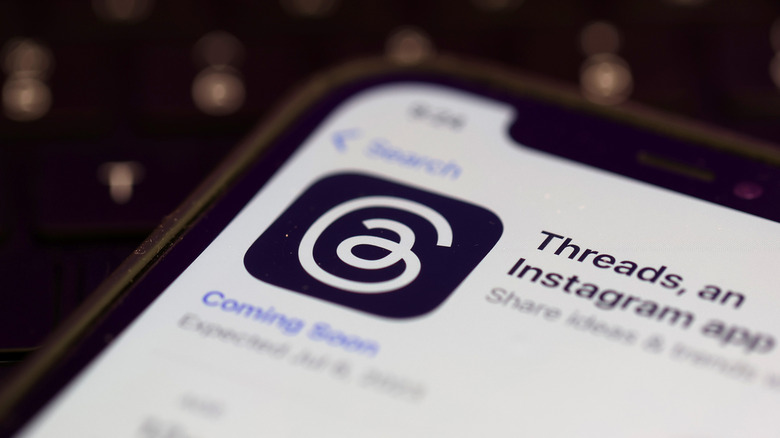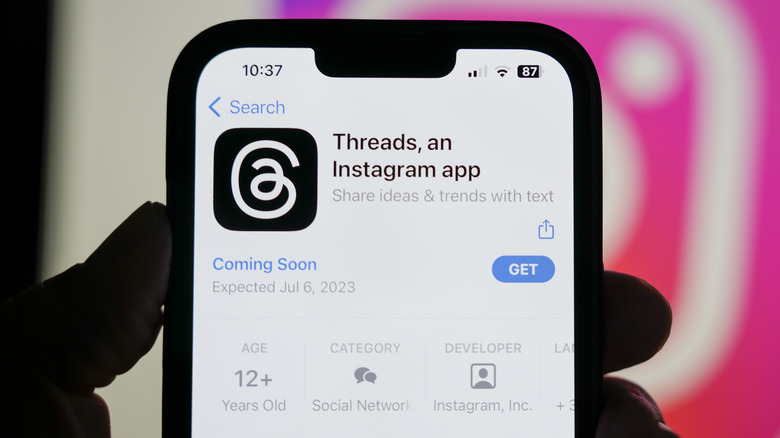Meta's New Twitter Alternative: 5 Things To Know About Threads Before You Sign Up
Since Elon Musk assumed control of Twitter in October 2022, many users have been searching for a viable alternative. While numerous Twitter competitor platforms emerged following Musk's takeover, including Bluesky, Post News, Spill, and Mastodon, none have successfully attracted a significant number of Twitter users.
However, just when it seemed that finding a suitable alternative was unlikely, social media giant Meta — the company behind Facebook, Instagram, and WhatsApp — unveiled a new platform called Threads. Unlike previous Twitter alternatives that faded away over time, Threads has experienced a remarkable surge in sign-ups since its launch on the Apple App Store and Google Play Store.
To differentiate between its existing platforms, Meta touts Threads as a primarily text-based platform with a mixture of features that seem to have been borrowed from Instagram, as well as Twitter. Users can "follow" people on the platform, have the option to keep their profiles private or public, and even give users the ability to "like" and "share" posts. Despite it being primarily text-based, Threads does allow users to post images and videos.
Newest reports indicate that the platform has managed more than 10 million sign ups in less than 24 hours, making it the fastest social media platform to hit the 10 million user base mark. Instagram Threads is very likely creating a niche of its own among other social media sites, and there are some important things you need to know before you decide to sign up for it.
Threads is closely integrated with Instagram
Threads is a product of Meta's Instagram team, and currently, new users are required to have an Instagram account to access it. During the sign-up process, users must connect their Instagram accounts, resulting in Threads using their Instagram usernames. Unfortunately, this means that having a unique username on Threads is not possible.
Changing your Threads username can only be done by altering your Instagram username as well. Notably, sign-ups via Facebook are not supported, and users attempting to do so have encountered difficulties. Deleting your Threads account also results in the deletion of the corresponding Instagram account.
However, there are advantages to Threads' close integration with Instagram. You can effortlessly follow your existing Instagram contacts on Threads. Verified Instagram accounts also carry over their verification badges to Threads. Although the app doesn't allow changing the username, you can edit your bio to differentiate it from Instagram.
Additionally, you can independently set your profile's privacy status on Threads, regardless of your Instagram account's privacy settings. Meta has also confirmed that users who are blocked on Instagram will remain blocked on Threads. Moreover, Threads already supports accessibility features like screen reader support and AI-generated image descriptions due to its integration with Instagram.
Longer character limit than Twitter, lesser toxicity
Currently, normal Twitter users (the ones not subscribed to the Blue premium tier) have a character limit of 270. While this is way better than Twitter's original 140 character limit, it is somewhat limiting for many users. In fact, this character limit is the sole reason for the existence of Twitter "threads" — from where Meta seems to have taken the name of its latest social media platform from.
Meta's Threads supports 500-character posts right from the start, making it easier for people to post longer content without the need to sign up for a premium tier plan. As outlined earlier, Threads, despite being a text-based platform, supports the inclusion of links, photos, and videos up to five minutes in length — providing you with a broader range of sharing possibilities.
One of the major issues surrounding Twitter — especially since the Musk takeover — was the assertion that the platform has become a breeding ground for toxic behavior. Musk's lackadaisical approach towards implementing rules against hate speech complicated the problem further.
While it is too early to say how Threads turns out to be, the platform does claim that the platform is designed to enable "positive, productive conversations." Threads will also be governed by the same Community Guidelines that Instagram currently followed. The platform will also give users several options to sever ties with people who break the guidelines including reporting their profiles, and blocking them from viewing your content.
Interoperability, and future plans
While there is no denying that Threads has all the hallmarks of a proprietary app, Meta has already expressed intentions to make Threads compatible with open and interoperable social networks. While Meta is yet to give us a timeframe, the company says they are working towards supporting the ActivityPub protocol and the "fediverse" in the near future. Once this happens, Threads will be able to easily connect with other compatible apps and platforms which currently includes the likes of WordPress and Mastodon.
Once implemented, it will give users the ability to follow and interact with users that are on other supported platforms, even if they do not have a Threads account. The advantages of open social networking protocols are manifold: Aside from giving users the ability to interact with users from other social networks, it also allows each platform to remain open, while also having the autonomy to establish its unique community standards and content moderation policies.
It is unclear at this time whether Meta has plans to support Threads using a web browser. The platform is currently accessible only via the respective iOS and Android apps, and is available for download in over 100 countries. While there is no denying that Threads is shaping up as a viable Twitter alternative, it remains to be seen whether there is sustained interest in the platform in the long run.



